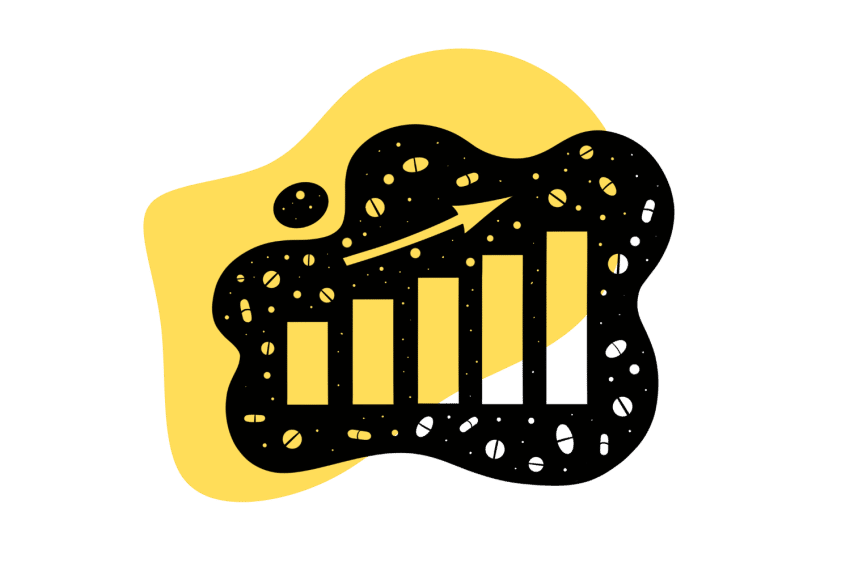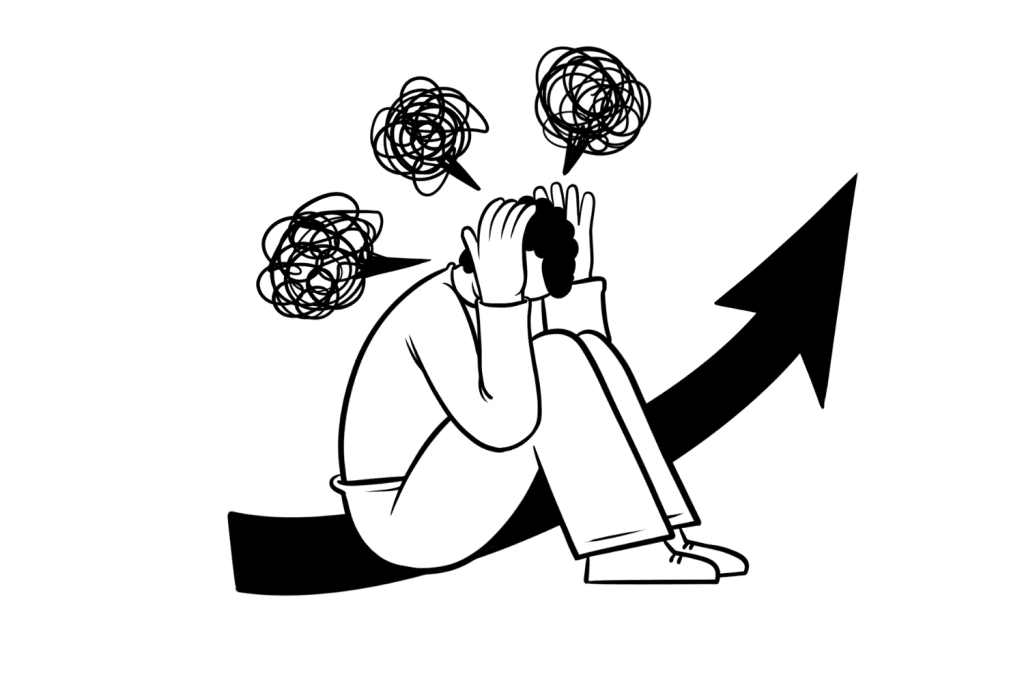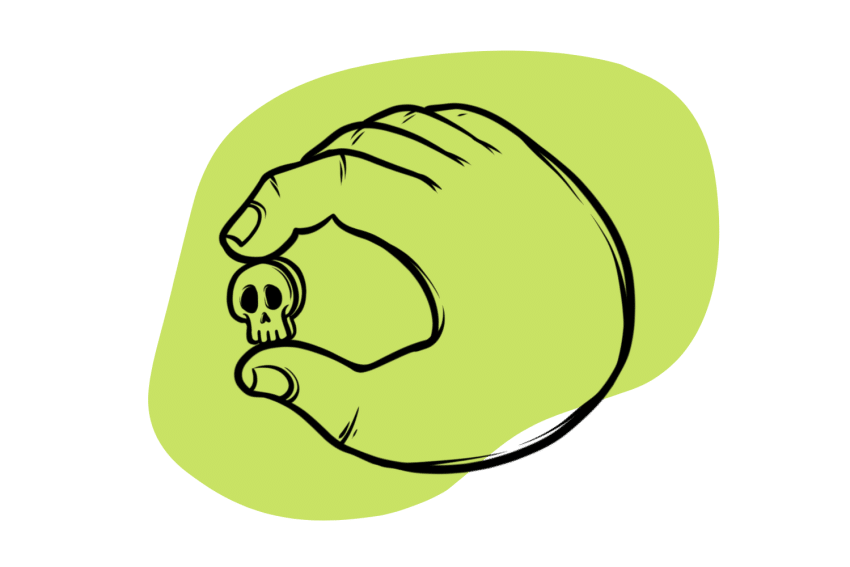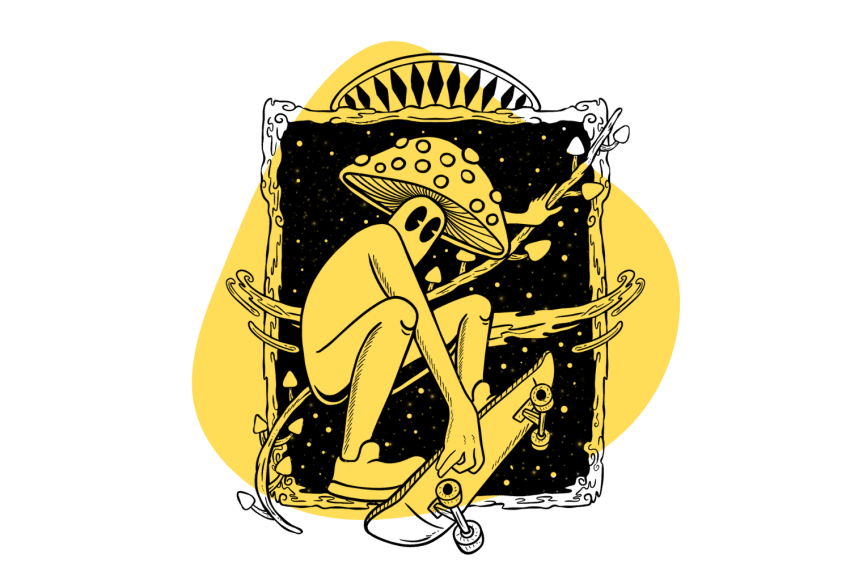MDMA Statistics: Common Doses, Safety, & A Look At the Trends Worldwide (2022)
This analysis reviews the most relevant data on MDMA and its impact worldwide.

How many people take MDMA (ecstasy)? How dangerous is it? How have the dosages changed over the years?
We’ve dug through decades worth of meta-analysis, clinical trials, and survey-led statistics to get a better idea of who’s using MDMA, why they use it, and the impact it has.
We’ll also cover important information about MDMA’s risks, side effects, legal status, and some prominent global foundations that support MDMA research for the greater good.
Defining MDMA (AKA Ecstasy)
MDMA (3,4-methylenedioxymethamphetamine) is a synthetic amphetamine drug that acts as both a stimulant and a hallucinogen.
On the streets, this compound goes by various names. For example, MDMA is often referred to as ecstasy when presented in tablets or capsules, but when sold as a crystalline powder, it’s commonly labeled as molly or moonrocks.
This amphetamine psychedelic produces energizing effects, feelings of euphoria and happiness, and a heightened sense of empathy. It’s also common for users to report time distortions and mild visual hallucinations.

In the 1970s and early 1980s (before there were any clinical trials on the safety or usefulness of this compound), MDMA was already being used by some psychiatrists with their patients. They believed it could improve communication with their patients and break down internal blocks preventing them from achieving breakthrough realizations. This was the birth of psychedelic-assisted psychotherapy (PAP).
Several decades later, thanks to a supportive community of researchers conducting ongoing clinical trials, the FDA announced MDMA-assisted psychotherapy as a “break-through therapy” for patients with post-traumatic stress disorder (PTSD).
We’re now on the brink of legalization and a reintegration of MDMA in the clinical setting.
Why Do People Take MDMA?
Today, the most common reason people take MDMA is for recreational purposes [1].
But medical interest is gaining a lot of attention. Until the laws change (which are likely to happen by 2024) the therapeutic use of MDMA remains illegal.
Who’s Taking MDMA?
In 2020, 1 in every 18 people aged 15–64 worldwide (an estimated 284 million people) had used an illegal drug in the past 12 months [2].
The 2022 World Drug Report declared that approximately 20 million persons (0.4% of the global population) consumed ecstasy at least once that year [2]. According to the data, the number of ecstasy consumers decreased by about 47% from 2018 to 2020.
This decline in ecstasy consumption can be attributed to the COVID-19 pandemic and subsequent lockdowns. The restriction of mass gatherings and social distancing greatly affected the party scene. Data shows ecstasy consumption declined more than any other drug during the pandemic [2].
Regarding worldwide consumption, Asia is home to the highest number of ecstasy users. In 2020, over 10 million Asians consumed ecstasy. However, before the COVID-19 pandemic, that number was closer to 20 million.
The following graph shows a more detailed view of worldwide ecstasy consumers from 2010 to 2020 by region.
Now, let’s focus on the reported data from 2020.
In that year, all of North America had 2.9 million users (0.9%). Americans’ self-reported annual prevalence of ecstasy use was above the global average, at 0.6% — about 3.8 million users. In Central and South America and the Caribbean, the past-year prevalence of MDMA use was about 0.2% [2].
These figures have not changed much in the United States and Canada.
The graph above also shows that in 2020, an estimated 0.7% of the European population aged 15–64, or 3.6 million people, had used ecstasy-type substances in the past year [2].
The prevalence of ecstasy use was higher in Western and Central Europe, with 0.9% of the population aged 15-64, or more than 2.9 million people, using the drug in the past year.
MDMA Use According to Gender & Sexual Orientation
According to the 2021 MDMA Abuse Research Report, the most prevalent MDMA users are males between the ages of 18 and 25; most of them started using the stimulant at 21.
The gender gap in MDMA use is real; for every 3 men that take ecstasy, roughly 2 women do so [2].
Source: World Drug Report, 2022
A study by NIDA shows that sexual orientation influences MDMA usage rates. For instance, gay or bisexual men and women are more likely than their heterosexual counterparts to have used MDMA within the last 30 days [1].
How Many People in the US Use MDMA?
According to the National Survey on Drug Use and Health, from 2009 to 2020, around 20.5 million U.S. adults had used MDMA at some point in their lifetime [4].
The same survey revealed that around 2.6 million people in the United States had used ecstasy in the past year [4].
MDMA Use Among US Youth
Alcohol and marijuana continue to be the most common and accessible drugs for this population group. As of 2021, only 1.7% of U.S. students in grades 8, 10, and 12 reported using MDMA in their lifetime [5].
In 2021, an estimated 0.6% of 8 graders, 0.7% of 10 graders, and 1.1% of 12 graders reported using MDMA within the past 12 months [5].
How Many People in Europe Use MDMA?
Cannabis is by far the most used drug across the population of the European Union, followed by cocaine, which 5% have used in their life, and then MDMA, at just 3.7% [6].
As of 2021, the Netherlands had the highest prevalence of ecstasy use among adults in Europe, with approximately 4% of the population reporting ecstasy use. This was followed by Ireland, with 2.7% of the population, and Czechia, with 1.9% [2].
Most countries in Western and Central Europe — for which data are available — have seen relatively stable long-term trends concerning the prevalence of the use of ecstasy-type substances. However, Belgium, Croatia, Germany, Ireland, and the Netherlands have all witnessed a clear increase in such use in the past ten years [2].
The use of ecstasy is more concentrated among young people than other drugs — more than three-quarters of past-year ecstasy users in the European Union are 15-34 [2].
The 2019 ESPAD Report declared that in 35 European countries, an estimated 2.3% of the population aged 15–16 had used ecstasy at least once, making it the second most used drug (after cannabis) among this age group.
In that year, the countries with the highest prevalence of ecstasy lifetime use among high school students were Estonia (5.2%), followed by Latvia (5%), and Czechia (3.6%) [7].
How Many People in Canada Use MDMA?
The 2019 Canadian Alcohol and Drugs Survey reported the prevalence of lifetime ecstasy use among Canadians. Turns out that 7.4% of people living in Nova Scotia, 7.2% of people living in Alberta, and 7.1% of those living in British Columbia had used ecstasy in their lifetime.
The provinces with the lowest prevalence of lifetime ecstasy use were Newfoundland & Labrador (4%) and Saskatchewan (4.9%) [8].
While past-year illicit drug use remained low, there was an overall increase. Almost one percent (0.7% or 216,000) of Canadians reported using ecstasy, an increase from 0.4% in 2013. Past-year use was more prevalent among males than females for ecstasy (1.0% males vs. 0.5% females) [9].
In 2012, the prevalence of past-year ecstasy use among the Canadian population aged 15 and older was relatively low (0.6% of the population) and has decreased by more than half since 2008 (1.4%) [10].
In 2013, the prevalence of past-year ecstasy use among recreational drug users ranged from 32.5% in Winnipeg, Manitoba, to 92.5% in Vancouver, British Columbia. Out of three high-risk populations, recreational drug users had the highest past-year ecstasy use — except for Winnipeg in 2012 and Toronto and Montreal in 2013.
MDMA Use Among Canadian Youth
As of 2017, 1 in 25 Canadian students in grades 10–12 reported using ecstasy in the past 12 months [10].
What’s more, students in grades 10–12 had a higher prevalence of past-year ecstasy use than those in grades 7–9 (4.0% vs. 0.7%). If we analyze this behavior by gender, the prevalence of past-year ecstasy use among students was similar between males and females (2.4% and 2.3%, respectively) [10].
According to the CTADS and CADMUS surveys, Canadians between 15–24 years have the highest prevalence of past-year ecstasy use among all age groups sampled in the general population. In 2015, the past-year prevalence of ecstasy use among this age group was 3.4%, a significant increase from the 1.9% prevalence rate reported in 2013 [10].
Another study published in The Canadian Journal of Psychiatry looked into the drug-consumption patterns of youth who attend rave parties in Montreal, Quebec. It is not novel that the population who attends rave parties represents a significant proportion of illicit drug users [11].
A total of 210 subjects responded to the anonymous survey; this is what the researchers found:
Cannabis and alcohol are the most prevalent drugs used at raves. However, MDMA ranks fifth, with around 65.2% of surveyed participants stating they used MDMA at least once in their lifetime.
The average age of first use for alcohol was 14.05 years (SD 2.18, n=188); cannabis was 15.13 years (SD 2.59, n=192); MDMA was 19.3 years (SD 3.4, n=137).
During the study, 65.2% of the subjects reported prior intoxication with MDMA, and 53.2% reported MDMA use in the 30 days before the survey.
What’s the Most Common Dose of MDMA?
Typically, MDMA is taken orally as a tablet or crystalline powder. The average reported dose is one to two tablets, typically containing between 60 and 120 mg of MDMA each [3].
However, the amount of MDMA can vary by region and supplier. For example, the 2021 European Drug Report stated that the average drug content of seized MDMA tablets was 118-210 mg of MDMA per tablet. Research suggests that the average quantity of MDMA per tablet has increased by 149% since 2009 [2].
This is especially true in the European Union, where half of the countries reported an average MDMA content in ecstasy tablets of 161-193 mg in 2019, up from the 50–80 mg of MDMA reported in the 1990s and 2000s.
Worldwide Data on MDMA Trafficking & Seizures
To put things into perspective, the following graph shows the global quantities of all drugs seized in 2020 worldwide.
In that year, cannabis led the boards, with over 15,000 tons seized. This was followed by the coca leaf (1,586 tons), poppy plants (1,251 tons), and cocaine hydrochloride (1,104 tons). In the same year, approximately 20 tons of MDMA were seized — meaning that, among the 28 compounds listed, MDMA takes the 19th place [2].
According to the 2022 World Drug Report, there’s an upward trend in the amount of dismantled ecstasy laboratories worldwide, rising from an annual average of 41 dismantled laboratories in 2010-2015 to an average of 58 from 2016-2020.
Most laboratories dismantled between 2016–2020 were in Europe (54%), followed by Oceania (23%), Asia (13%), and the Americas (9%) [2].
Although there was a decrease in ecstasy demand in 2020, seizures continued to increase that year from approximately 33,000 lbs (~20,000 kg) in 2019 to about 44,000 lbs (~15,000 kg). This amount surpassed the previous 2007 record of around 37,500 lbs (17,000 kg) [2].
Europe
As mentioned before, Europe accounted for 54% of the ecstasy laboratories dismantled worldwide in the period 2016–2020 [2].
Seizures of MDMA powder in the European Union increased from 0.3 tonnes in 2016 to 2.2 tonnes in 2018, and this level was maintained in 2019. The 4.6 million MDMA tablets seized in 2019 confirm the general upward trend observed since 2009 [12].
The United Kingdom
From 2018 to 2019, police in England and Police carried out almost 2.7 thousand ecstasy seizures. This is approximately a 65% drop in seizures compared to 2006-2007.
Americas
North America: Canada
In 2015, 32.7 lbs (14.86 kg) or a total of 25,574 tablets of ecstasy-type substances were seized in Canada.
In 2015, police also reported:
- 418 incidents of ecstasy possession (183 charges)
- 141 incidents of ecstasy trafficking (93 charges)
- 4 incidents of ecstasy production (3 charges)
Overall, in 2015, the rate of ecstasy-related possession incidents reported by police increased by 12.3%. Rates of trafficking incidents remained relatively stable, with a 1.31% increase from 2014, while rates of incidents of ecstasy production decreased by 43.3% [10].
North America: The United States
The U.S. Customs and Border Protection website provides good insights on the amount of ecstasy seized in the past 4 years. According to the data, the biggest seizure in these 4 years was in August 2019, with 497 lbs (225 kg) of ecstasy.
Once again, we can see a rise in the number of seizures in 2022 vs. 2021, despite the decrease in ecstasy demand and consumption.
The following graph shows the total amount of ecstasy seizures for the 4-year period.
Source: U.S. Customs and Border Protection
Central America, South America, & the Caribbean
Since 2014, annual seizures in these regions have increased. Ecstasy is mostly trafficked from Western and Southern Europe. However, some countries in the Caribbean and South America — including Colombia, Brazil, Argentina, and the Dominican Republic — are also manufacturing the substance [18].
In 2018, approximately 551 lbs (250 kg) of MDMA were seized — 5 times higher than in 2008, when only 110 lbs (50 kg) were seized. Data also shows that the highest amount of MDMA seizures in this 10-year period took place in 2017, peaking at 992 lbs (450 kg) [18].
The following graph shows a significant decrease in seizures in Argentina and Brazil and an increase in Chile, Costa Rica, Paraguay, and Uruguay in 2017-2018.
Australia
The Australian Criminal Intelligence Commission’s Illicit Drug Data Reports provide detailed insights on the MDMA drug market, including and analyzing data from 2010-2020.
According to the reports, the number of ecstasy detections at the Australian border has fluctuated over the last 10 years, but the long-term trend indicates an overall increase.
Border detections increased by 7,026% from 53 detections in 2009–2010 to 3,777 in 2018–2019. Then, between 2018-2019 and 2019-2020, there was a -39% change in MDMA border detections, going from 3,777 to 2,308, respectively.
The weight of MDMA detections also fluctuated over the last decade, increasing 49,446% from 14 lbs (6.5 kg) in 2009–2010 to 7,085 lbs (3214 kg) in 2019-2020, the highest recorded weight in the last decade.
How Dangerous is MDMA?
On its own, MDMA can be safe when used in a clinical setting, as noted below in the research. The real problem comes when it’s used irresponsibly or adulterated with other substances.
Most people consuming ecstasy or molly expect the primary ingredient to be MDMA. Unfortunately, pills, capsules, and powder sold as ecstasy or molly frequently contain other ingredients that can be dangerous, including synthetic cathinones or other adulterants [10].
The following data shows just how impure street drugs can be:
- The 2021 European Drug Report states that the average purity of amphetamines in the European Union at the retail level varied from 13% to 67% in 2019, with half the countries reporting an average purity between 20% and 35%.
- Among the countries consistently providing data on purity and price, the average purity of amphetamine compounds has increased markedly over the past decade, while the price has remained relatively stable [12].
- The average purity of amphetamine samples submitted for testing to drug-checking services in 10 European cities between January and June 2020 was 35% (37% during the same period in 2019) [12].
Suggested Reading: How To Test Psychoactive Substances With Drug Testing Kits & Reagents
What Are the Side Effects of MDMA?
The most common side effect of MDMA is an excessive rise in body temperature, also known as hyperthermia. This side effect may arise due to the stimulating properties of the drug. Animal studies have shown that MDMA may interfere with the body’s ability to regulate temperature.
When taking MDMA, it’s common for users to engage in constant physical activity for long periods and, sometimes, in a warm environment.
This can also lead to dehydration, electrolyte imbalance, and other severe consequences like kidney failure and swelling of the brain [13].

Moreover, various studies have found that MDMA use is associated with risky sexual behaviors. For example, males and females who use MDMA are more likely than alcohol-drinking controls to engage in risky sexual behaviors (e.g., without a condom) [1].
Other possible short-term side effects of MDMA use include [11, 14]:
- Ataxia
- Chills or sweating
- Diarrhea
- Enhanced sensory perception
- Faintness
- Increased heart rate and blood pressure
- Lowered inhibition
- Muscle tension
- Nausea
- Tremor
- Sharp rise in body temperature (hyperthermia) leading to kidney failure or death
MDMA can also produce other adverse health effects, including involuntary jaw clenching, lack of appetite, mild detachment from oneself (depersonalization), illogical or disorganized thoughts, restless legs, hot flashes or chills, and joint stiffness [1].
MDMA use has also been associated with sudden death and cardiovascular collapse, with the most common cause of death being hyperthermia [11].
Regular MDMA use can cause sleep disturbances, lack of appetite, concentration difficulties, depression, and heart disease. Heavy MDMA use over two years is associated with decreased cognitive function [1].
Possible long-term side effects of MDMA use include [14]:
- Depression
- Impulsiveness
- Increased anxiety
- Long-lasting confusion
- Low libido
- Problems with attention, memory, and sleep
Can You Die From An MDMA Overdose?
While potentially deadly, overdoses on MDMA alone are rare. More commonly, MDMA-related deaths occur due to mixing MDMA with contraindicated medications (such as MAOI antidepressants), preexisting health conditions, or dehydration. MDMA overdose symptoms include high blood pressure (hypertension), faintness, panic attacks, and in severe cases, a loss of consciousness and seizures [1].
One of the biggest problems is that, in the last two decades, ecstasy tablets contain less and less MDMA and more adulterating or substituting psychedelic substances. Many tablets sold as “MDMA” in reality contain other analogs like MDA or MDEA, chemicals such as PMA or PMMA, piperazines, or even 2C-B. The composition of MDMA tablets varies according to the time and the region where they are sourced [15].
The following graph shows the number of drug-related deaths from MDMA use in England from 1993 to 2020.
In 2018, 92 people died because of ecstasy use in England and Wales; this was the highest number of recorded deaths in the 25 years shown.
How Much Research is There for MDMA?
After MDMA was first synthesized more than 60 years ago, researchers worldwide have found interest in its therapeutic potential. MDMA has been studied for its effects on conditions like post-traumatic stress disorder, treatment-resistant depression, anxiety, and substance abuse disorders.
To date, there have been 47 MDMA clinical trials, of which 19 are phase II studies, and 3 are phase III studies [17].
In these 47 clinical trials, nearly 1,900 patients have been enrolled as of July 2021. Among the active trials are several investigating MDMA for the treatment of PTSD, MDMA for the treatment of eating disorders, and MDMA for the treatment of alcoholism [17].
The world’s first clinical trial of MDMA-assisted psychotherapy was sponsored by the Multidisciplinary Association of Psychedelic Studies (MAPS) in Spain in 2000. However, the trial was closed in 2002 before completion [17].
In 2004, the FDA approved two MAPS-sponsored MDMA-assisted psychotherapy studies — including one for treating PTSD — following continuous advocacy campaigns and increasing medical and mainstream support.
In 2011, the Journal of Psychopharmacology published the first MDMA clinical trial results. The study included 20 participants with chronic, treatment-resistant PTSD. The participants were randomly assigned to an 8-hour psychotherapy session alone with MDMA or an inactive placebo. Both groups received preparatory and follow-up non-drug psychotherapy.
The decrease in Clinician-Administered PTSD Scale scores from baseline was significantly greater for the MDMA group than for the placebo group at all three-time points after baseline. The rate of clinical response was 83% in the active treatment group versus 25% in the placebo group.
No drug-related serious adverse events, adverse neurocognitive effects, or clinically significant blood pressure increases were reported. This study concluded that MDMA-assisted psychotherapy could be administered to PTSD patients without evidence of harm, and it may be useful in patients refractory to other treatments.
Who Are the Prominent Researchers Studying MDMA?
Just 20 years ago, researchers risked losing their jobs by studying psychedelics. However, the picture today is very different. Now dozens of researchers have dedicated their lives to understanding this molecule in more detail.
Here are some of the most prominent people in this space:
1. Rick Doblin, Ph.D.
The Multidisciplinary Association of Psychedelic Studies (MAPS) was founded in 1986 by Rick Doblin, Ph.D., to research and cultivate awareness of the healing potential of MDMA and other psychedelics.

Relevant publications
- The safety and efficacy of {+/-}3,4-methylenedioxymethamphetamine-assisted psychotherapy in subjects with chronic, treatment-resistant posttraumatic stress disorder: the first randomized controlled pilot study (2010)
- MDMA-assisted therapy for severe PTSD: a randomized, double-blind, placebo-controlled phase 3 study (2021)
- 3,4-methylenedioxymethamphetamine (MDMA)-assisted psychotherapy for post-traumatic stress disorder in military veterans, firefighters, and police officers: a randomised, double-blind, dose-response, phase 2 clinical trial (2018)
- The cost-effectiveness of MDMA-assisted psychotherapy for the treatment of chronic, treatment-resistant PTSD (2020)
2. Dr. Robin Carhart-Harris
Dr. Carhart-Harris has been the Head of the Centre for Psychedelic Research, Division of Psychiatry, Department of Brain Sciences, Faculty of Medicine, Imperial College London, since April 2019.
He has published over 100 scientific papers on psychedelics like LSD, MDMA, DMT, and psilocybin.

Relevant publications
- How do psychedelics work? (2019)
- The Therapeutic Potential of Psychedelic Drugs: Past, Present, and Future (2017)
- Acute effects of MDMA on trust, cooperative behaviour and empathy: A double-blind, placebo-controlled experiment (2020)
- The Effects of Acutely Administered 3,4-Methylenedioxymethamphetamine on Spontaneous Brain Function in Healthy Volunteers Measured with Arterial Spin Labeling and Blood Oxygen Level-Dependent Resting State Functional Connectivity (2015)
3. Amanda Feilding
This renowned scientist is known for being the co-founder of the Beckley Foundation, an NGO think tank and psychedelic research organization in Oxford, United Kingdom.

Amanda Feilding has conducted plenty of clinical studies involving psychedelics. Through the Beckley Foundation, she has promoted research on LSD, MDMA, ayahuasca, and psilocybin to provide evidence-based data for the public’s education and the UK’s drug policy reform.
- Acute effects of MDMA on trust, cooperative behaviour and empathy: A double-blind, placebo-controlled experiment (2020)
- Harms and benefits associated with psychoactive drugs: findings of an international survey of active drug users (2013)
- The effects of psilocybin and MDMA on between-network resting state functional connectivity in healthy volunteers (2017)
4. Alicia Danforth
Alicia Danforth is a clinical psychologist trained in Trauma-Focused CBT and Focusing-Oriented Psychotherapy. She has conducted MDMA clinical research at the Lundquist Institute at the Harbor-UCLA Medical Center.

Some of her most relevant publications are:
- Embracing Neurodiversity in Psychedelic Science: A Mixed-Methods Inquiry into the MDMA Experiences of Autistic Adults (2019)
- Reduction in social anxiety after MDMA-assisted psychotherapy with autistic adults: a randomized, double-blind, placebo-controlled pilot study (2018)
- MDMA-assisted therapy: A new treatment model for social anxiety in autistic adults (2016)
Where is MDMA Studied the Most?
The vast majority of research currently being conducted on MDMA comes from just six institutions:
- Awakn Life Sciences Inc. — This organization led the world’s first ‘MDMA in Alcohol Use Disorder Clinical Trial. Awakn is now designing further trials to examine better the therapeutic potential of MDMA.
- The Beckley Foundation — The Beckley Foundation carries out in-depth scientific research of psychoactive substances — including psilocybin, MDMA, and LSD — and uses their evidence-based information for global drug policy reformation.
- Imperial College London’s Centre for Psychedelic Research — The center is run by Dr. Cahart-Harris and performs clinical research on the use of psychedelics in mental health care.
- Multidisciplinary Association of Psychedelic Studies (MAPS) — Founded in 1986, MAPS is a non-profit organization that aims to provide research and education on classical psychedelics and marihuana.
- University of California, Los Angeles (UCLA) — The UCLA Psychedelic Studies Initiative is entering in the field of psychedelic research to contribute to the body of knowledge on the therapeutic potential of psychedelic compounds.
- University Hospital in Basel, Switzerland — Dr. Leichti’s research group carries out pharmacological research of psychedelic substances, including MDMA.
Is MDMA Legal?
It’s only been around 65 years since MDMA was first synthesized, and since then, its legal status has shifted several times.
In the US, in 1985, MDMA was subjected to an emergency ban by the DEA and added to the Controlled Substances Act alongside MDA, psilocybin, and LSD [17].
In 2017, the FDA designated MDMA-assisted psychotherapy a breakthrough therapy, recognizing its benefits over current available treatments [17].
In 2021 — fifty years after Nixon’s ‘War On Drugs’ speech — MAPS published the results from its FDA-approved phase IIIa clinical trial, demonstrating MDMA-assisted therapy’s capacity to combat PTSD. By the end of the treatment, 67% of patients in the randomized placebo-controlled trial no longer met the criteria for PTSD and suffered little to no side effects. As a result of these impressive safety and efficacy results, we can expect the FDA to approve MDMA-assisted psychotherapy for PTSD in 2023 [17].
As of today, some countries worldwide have decriminalized the possession of small amounts of any drug so long as it’s only intended for personal use. Some of these countries have explicitly legislated for threshold amounts of MDMA.
These countries differ widely in terms of acceptable thresholds. In Germany, for example, it is permissible to possess up to 5 g of MDMA for personal use. In Peru, however, possessing more than 0.25 g of MDMA will result in penalties. In addition, the Peruvian National Police continue to make arrests for drug possession, which accounted for nearly half of all drug-related arrests in 2018.
In the United Kingdom, MDMA is categorized as a class A drug, which means it carries the most severe penalties for both possession and supply.
Internationally, MDMA remains a Schedule I controlled substance, which means it has a high potential for addiction and abuse [17].
Final Thoughts: MDMA By the Numbers
MDMA is one of the most popular party stimulant drugs among people ages 15-35 worldwide.
Current data shows that Asia is home to the highest number of ecstasy users, followed by Europe and America. Data also suggests that men are more likely to use MDMA than women, and that homosexual or bisexual individuals are more likely to have used MDMA.
We also know that the amount of MDMA per tablet has increased by 149% since 2009 [2]. Nowadays, tablets typically contain between 60 and 120 mg of MDMA.
The dangers of MDMA use are mostly due to the lack of purity, since many manufacturers use adulterants to produce snake MDMA tablets and powder. We strongly recommend testing any substance before consuming it.
However, thanks to its therapeutic potential for PTSD, the FDA has granted MDMA-Assisted Psychotherapy a “break-through therapy” designation.
The most prominent institutions that promote psychedelic clinical research are MAPS, the Beckley Foundation, Awakn Life Sciences, among others. Clinical research trends suggest that more clinical trials focusing on MDMA will be developed in the next years, and we can assume legislation worldwide will change as the research progresses.
References
- NIDA. 2021, August 3. MDMA (Ecstasy) Abuse Report. Retrieved from https://nida.nih.gov/publications/research-reports/mdma-ecstasy-abuse/Introduction on 2022, October 5
- UNODC, World Drug Report 2022 (United Nations publication, 2022).
- NIDA. 2006, Research Report Series: MDMA (Ecstasy Abuse). Retrieved from https://nida.nih.gov/sites/default/files/rrmdma_0.pdf on 2022, October 5
- Substance Abuse and Mental Health Services Administration (SAMHSA). “National survey on drug use and health.” (2020).
- Johnston, L. D., Miech, R. A., O’Malley, P. M., Bachman, J. G., Schulenberg, J. E., & Patrick, M. E. (2022). Monitoring the Future national survey results on drug use 1975-2021: Overview, key findings on adolescent drug use. Ann Arbor: Institute for Social Research, University of Michigan.
- European Monitoring Centre for Drugs and Drug Addiction (2022), European Drug Report 2022: Trends and Developments, Publications Office of the European Union, Luxembourg
- ESPAD Group (2020), ESPAD Report 2019: Results from the European School Survey Project on Alcohol and Other Drugs, EMCDDA Joint Publications, Publications Office of the European Union, Luxembourg
- Government of Canada. 2019, Canadian Alcohol and Drugs Survey (CADS).
- Government of Canada. 2015, Canadian Tobacco, Alcohol and Drugs Survey (CTADS)
- Canadian Centre on Substance Abuse and Addiction (CCSAA). (2017). Canadian Drug Summary: Ecstasy or Molly (MDMA). Retreived from https://www.ccsa.ca/sites/default/files/2019-04/CCSA-Canadian-Drug-Summary-MDMA-2017-en.pdf on 2022, October 5
- Gross, S. R., Barrett, S. P., Shestowsky, J. S., & Pihl, R. O. (2002). Ecstasy and drug consumption patterns: a Canadian rave population study. The Canadian Journal of Psychiatry, 47(6), 546-551.
- European Monitoring Centre for Drugs and Drug Addiction (2021), European Drug Report 2021: Trends and Developments, Publications Office of the European Union, Luxembourg
- NIDA. 2021, April 13. What are the effects of MDMA?. Retrieved from https://nida.nih.gov/publications/research-reports/mdma-ecstasy-abuse/what-are-effects-mdma on 2022, October 6
- U.S. Department of Health and Human Services. (2022, June 3). Commonly used drugs charts. National Institutes of Health. Retrieved October 6, 2022, from https://nida.nih.gov/research-topics/commonly-used-drugs-charts#mdma
- World Drug Report 2021 (United Nations publication, Sales No. E.21.XI.8).
- Mounteney, J., Griffiths, P., Sedefov, R., Noor, A., Vicente, J., & Simon, R. (2016). The drug situation in Europe: an overview of data available on illicit drugs and new psychoactive substances from European monitoring in 2015. Addiction, 111(1), 34-48.
- The psychedelics as Medicine Report: Third edition. PSYCH. (2022, June 9). Retrieved October 6, 2022, from https://psych.global/report/
- 2020 Global Synthetic Drugs Assessment. United Nations: Office on Drugs and Crime. (n.d.). Retrieved October 24, 2022, from https://www.unodc.org/unodc/en/scientists/2020-global-synthetic-drugs-assessment_Global.html








